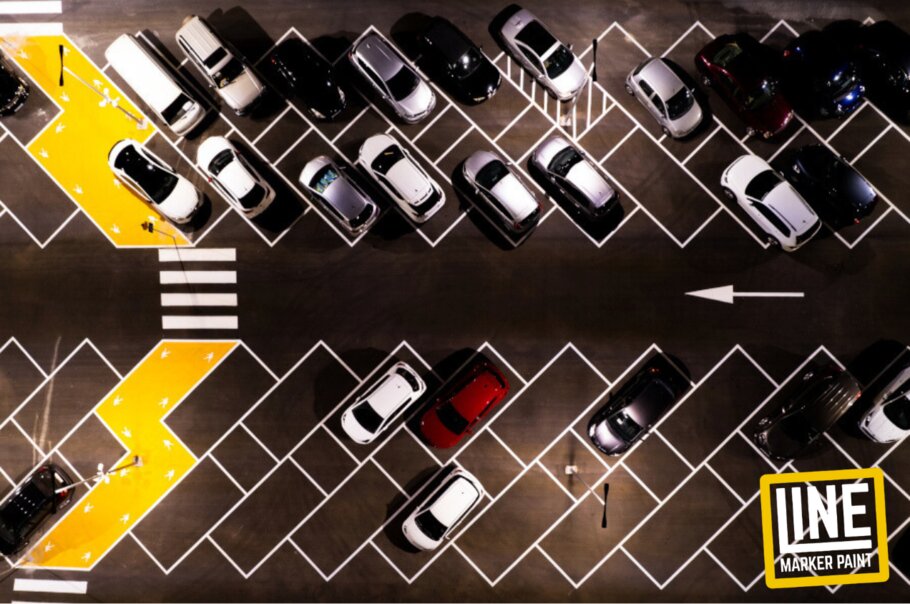How to Mark a Car Park

How to Mark a Car Park
Marking a car park is not as simple as painting spaces with a slap of left over emulsion. For proper markings, you need line marking paint that creates sharp, highly-visible, durable lines. You must also accurately measure your car park design and offer clear demarcation of directions, parking bays, and pedestrian routes. All car parks have to conform to the national regulations.
What are the Regulations?
By law, every car park must be safe and appropriate for operation with clear markings. It is the duty of care of every car park owner or responsible parties to ensure that the risk of any damage and injury is not the result of poor design or markings. It is under the Health & Safety At Work Act 1974 and the Occupiers Liability Act 1957, that car parks conform to British Safety Institution (BSI) standards. There is a criteria on line marking that you must meet, ensuring you:
- Keep parked traffic away from moving traffic
- Provide non-slippery surfaces
- Segregate pedestrian walkways from traffic routes with clearly marked walkways
- Be located as close as possible to destination facilities
How to mark a car park with line marking paint
- You can do car park making yourself by hand or you can contact a professional for concise, accurate, and safe markings. Application is easy if you take your time to complete the job, which we have broken down into six steps.
- Prepare the surface area by clearing all debris like foliage, branches, loose gravel and sand. You can use a floor sweeper, power brush, or pressure washer if necessary.
- Use a tape measure to accurately mark each parking bay in compliance with the minimum recommended dimensions.
- Use a chalk line to mark perfectly straight guidelines before using any paint.
- Prepare your line marking paint. Ensure you have the suitable paint, colours and the correct applicator. Shake the aerosol well before use and test that it is unobstructed and is spraying smoothly.
- Insert the aerosol can into the applicator correctly, following the manufacturer’s instructions.
- Pull the trigger on the applicator to start the paint spray. Walk slowly and steadily in straight lines, following your guide lines, to ensure straight, concise, and clear line markings.
What size should parking bays be?
The minimum recommended dimensions for a standard car parking bay in the UK is 2.4 metres wide by 4.8 metres long. Each space should be clearly outlined and separated by accurate marks. Although vehicle size can vary a lot, these are the standard dimensions deemed adequate for access and exit.
What type of paint can I use?
The ProSolve range provides a high-quality, cost-effective, and practical line marking solution. ProSolve Sharpliner line marker paint is suitable for a variety of surfaces including tarmac, wood, metal, glass and more. As this paint is an aerosol, it is fast drying, quick and easy to apply. It creates bright, long-lasting lines that are resistant to adverse weather and can withstand regular wear and tear. One of the key benefits of aerosol line marker paint is that it can achieve all this and a quality finish without mixing or messy preparation.
What paint applicators are there?
There is a wide range of line marking paint applicators available. Each model is suitable for line marking but you will find some more appropriate depending on the complexity of the job. Some of the most popular applicators available include:
Line Marking Machines - wheeled machines that you can pushed or are motorised. Marking machines vary in price and capabilities, but generally they are adjustable. You can set the size and locked them into place, then steer them along while you apply paint using a trigger.
Hand Held Line Marking Applicators - simple applicators that allow you to create sharp line markings. They feature easy to squeeze triggers, so the resulting finish is more accurate and more consistent than when spraying the aerosol with your finger. They are ideal for spraying free hand curves and lines, or spraying stencils and signs such as disabled parking bay logos.
What else do I need to know?
You must designate disabled parking spaces, identified by disabled bay markings, and a marked access zone. You can use stencils for disabled bay markings, arrows, letters, and numbers to create defined, clear images.
